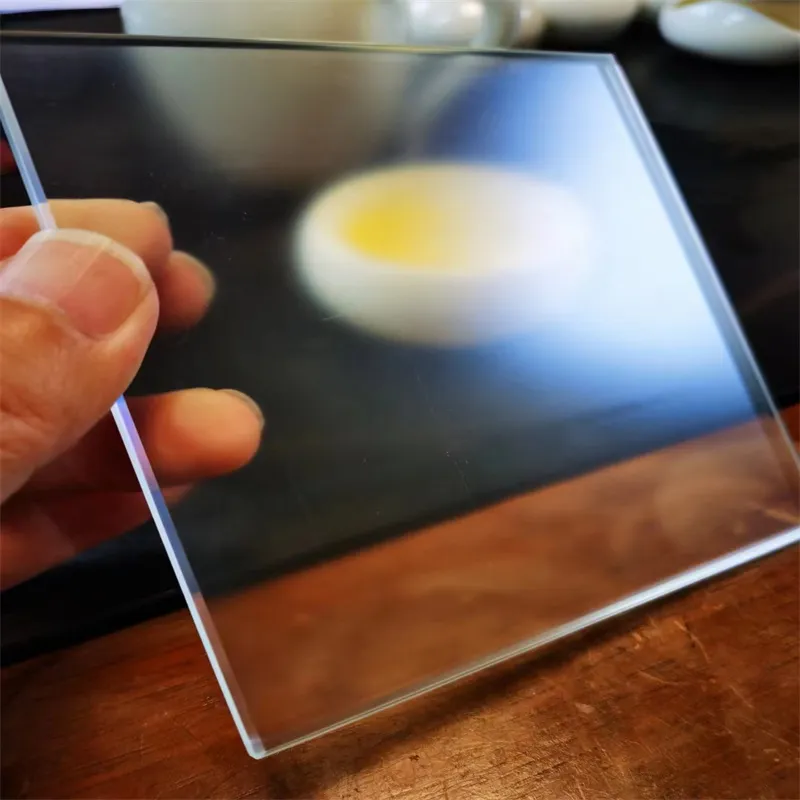Nov . 23, 2024 23:52 Back to list
laminated safety glazing
The Importance of Laminated Safety Glazing
Laminated safety glazing is a vital component in modern construction and design, providing both structural integrity and enhanced safety features. Comprising two or more layers of glass bonded together by an interlayer, commonly made from polyvinyl butyral (PVB) or ethylene-vinyl acetate (EVA), laminated safety glazing is engineered to withstand impacts and prevent shattering. This unique construction not only enhances the performance of windows and other glass elements but also contributes to the overall safety and security of buildings.
Safety Benefits
One of the primary advantages of laminated safety glazing is its capacity to hold together when shattered. Unlike traditional glass, which can break into dangerous shards, laminated glass remains intact, significantly reducing the risk of injury. This feature is especially crucial in high-traffic areas, public buildings, and locations susceptible to severe weather conditions or vandalism. In the event of an accident, laminated glass prevents the glass from collapsing, thereby acting as a safety barrier.
Additionally, laminated safety glazing offers enhanced sound insulation properties. The interlayer in the glass not only holds the layers together but also dissipates sound waves, making it an excellent choice for buildings in noisy environments. Whether it’s a residential home located near a busy street or an office building situated in a bustling urban area, laminated glass can create a more serene and peaceful atmosphere inside.
Security Applications
laminated safety glazing

In terms of security, laminated safety glazing is a favored option in areas that might require extra protection. For instance, in banks, jewelry stores, and government buildings, laminated glass serves as a deterrent to break-ins and theft. The robust nature of laminated glass makes it much more challenging to penetrate than regular glass, providing an added layer of security for valuable possessions and sensitive information.
Moreover, laminated safety glazing can also be treated to provide additional benefits such as UV filtering and heat control. By blocking harmful UV rays, laminated glass helps to protect interior furnishings and occupants from sun damage. This energy-efficient quality can contribute to lower energy costs, as it can help regulate indoor temperatures, reducing the reliance on heating and cooling systems.
Design Versatility
Aside from its safety and security features, laminated safety glazing offers versatility in design. Available in various thicknesses, tints, and finishes, it can be customized to match the aesthetic preferences of architects and designers. Whether it’s a sleek modern office building or a traditional residential home, laminated glass can blend seamlessly with various architectural styles while maintaining high performance standards.
Conclusion
In summary, laminated safety glazing represents a significant advancement in glass technology, delivering enhanced safety, security, and aesthetic appeal. Its ability to withstand impacts, prevent injuries, and provide sound insulation makes it an essential choice for contemporary buildings. As urban environments continue to evolve and the demand for safety and efficiency rises, laminated safety glazing will undoubtedly remain at the forefront of architectural design and construction. Invest in laminated safety glazing to enhance the safety and functionality of any space for years to come.
-
Safety and Style with Premium Laminated Glass Solutions
NewsJun.24,2025
-
Reinvents Security with Premium Wired Glass
NewsJun.24,2025
-
Premium Float Glass Line for Modern Architecture
NewsJun.24,2025
-
Low Emissivity Glass for Energy-Efficient Architecture
NewsJun.24,2025
-
High-Performance Insulated Glass Solutions for Modern Architecture
NewsJun.24,2025
-
Elevates Interior Style with Premium Silver Mirror
NewsJun.24,2025
Related PRODUCTS














